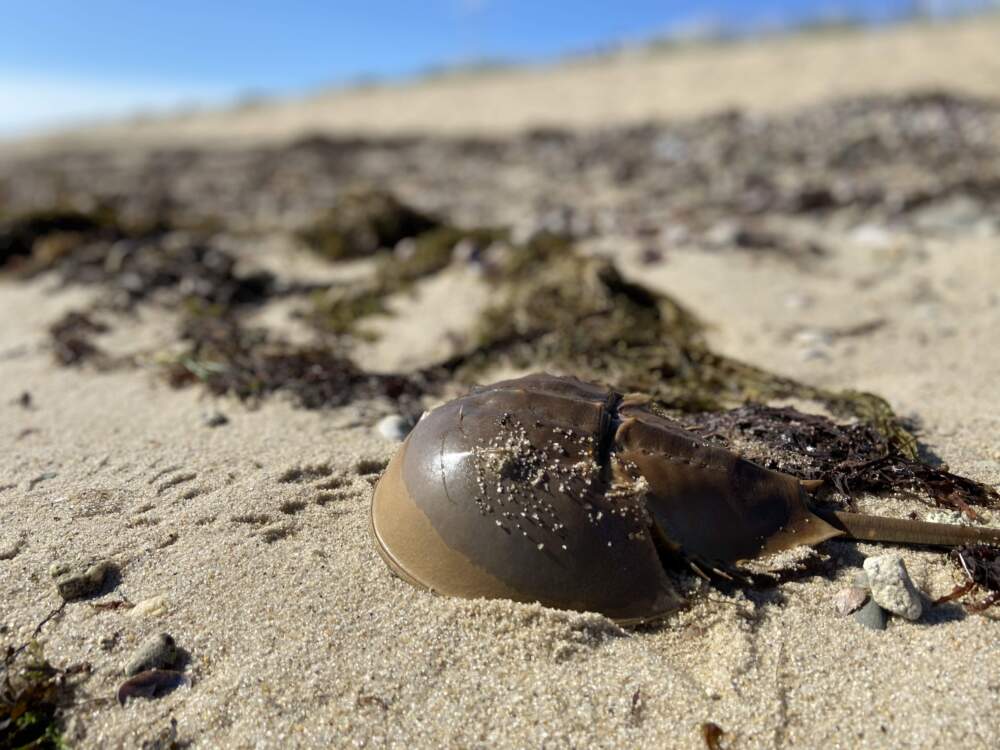Advertisement
Mass. proposes new protections for horseshoe crabs

The Massachusetts Division of Marine Fisheries is proposing new regulations that would prohibit harvesting horseshoe crabs during the spring spawning season, from April 15 to June 7. Horseshoe crabs are harvested for bait and also for use in the biomedical industry.
Federal law already prohibits horseshoe crab harvest within the Monomoy National Wildlife Refuge and the Cape Cod National Seashore. But stricter state rules would align Massachusetts with other states' regulations, according to the proposal from Division of Marine Fisheries director Daniel McKiernan. Massachusetts is one of four states where horseshoe crabs can be harvested for both bait and biomedical uses, and has the weakest protections of the four.
Horseshoe crabs spawn on beaches, mostly during full moons in the spring. As climate change accelerates sea level rise and beach erosion, the crabs are suffering from loss of spawning habitat.
“The conservation of fisheries is a critical part of the Division of Marine Fisheries’ work. Our draft regulations provide adjustments to spawning closures that we believe will boost overall abundance of horseshoe crabs, sustaining populations into the future," said McKiernan in a statement.
Horseshoe crabs are not endangered, and their population is currently "fairly stable" in Massachusetts, according to the Division of Marine Fisheries. But there are far fewer in the state than there used to be, causing ripple effects throughout the coastal ecosystem.
"They're important because of these connections they have to other species," said Mark Faherty, science coordinator for Mass Audubon Wellfleet Bay, "particularly, declining migratory shorebirds that feed on their eggs in the spring."
Horseshoe crab blood is used in the biomedical industry; companies collect the crabs, extract blood, then return the animals to the ocean. About 15-30% of crabs die in the process, though the mortality rate is disputed. In Massachusetts, some bled crabs are sold for bait to the channeled whelk fishery. Crabs are also harvested for bait use alone.
"Bait harvest is by far the biggest problem," said Faherty. "That's 100% mortality. That's a one-way trip for a horseshoe crab. You're getting cut up, put in a freezer, put in a bait bag."
The new regulations could affect harvesters of horseshoe crabs, as well as supply chains for certain fisheries and biomedical companies. The state will hold public hearings on the proposed regulations on Feb. 28 and 29, and should make a final decision on the rule in March.
